Japanese anti-tank artillery in World War II
Anti-tank guns caliber 37-47 mm
The creation of specialized anti-tank guns in Japan began later than in other countries. Until the end of the 1930-ies, the main means of the front-line anti-tank defense was the 37-mm Type 11 infantry weapon. It was a typical example of a "trench gun", created on the basis of the French gun Canon d'Infanterie de 37 modèle 1916 TRP. For shooting from Type 11, the 37x94R shot was also used.
The design of the Type 11 gun was very simple, which made it possible to achieve a minimum weight and size. The recoil device consisted of a hydraulic recoil brake and spring-loaded knurling. With a weight of 93,4 kg, the 37-mm gun could carry 4 people. For this, there were brackets on the carriage, into which poles were inserted. In total, taking into account the carriers of the ammunition in the calculation was 10 people. Disassembled gun was transported in packs on horseback. To protect the design from bullets and splinters, a steel 3-mm shield could be mounted on the gun, but the weight increased to 110 kg.
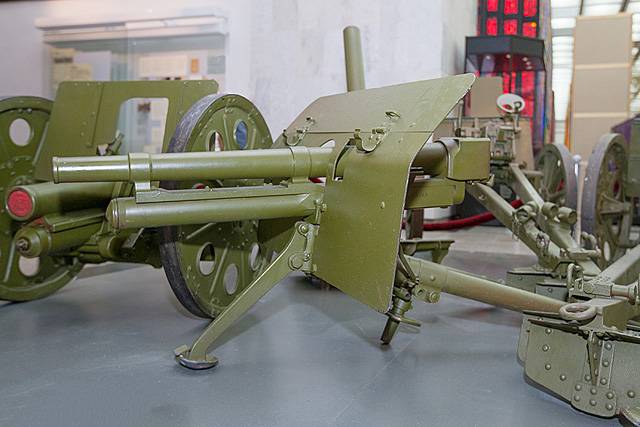
A Japanese 37-mm Type 11 infantry gun with a shield in the exposition of the Central Museum of the Great Patriotic War 1941 – 1945.
A gun with a manually wedged vertical wedge gate could make 10 rpm. Fragmentation projectile mass 645 g filled 41 g of TNT. With the initial velocity of the 451 projectile, m / s, the effective firing range for point targets did not exceed 1200 m. Also, the ammunition consisted of cast iron armor-piercing tracer shells, which could fight light armored vehicles at 500 m range.
The serial production of the Type 11 lasted from 1922 to 1937 year. Each state regiment of the imperial army was supposed to have 4 37-mm infantry guns. The gun showed itself well in the early stages of the Second Sino-Japanese War, providing fire support to the infantry and striking various types of targets, such as bunkers, machine gun nests and lightly armored vehicles. Against Soviet armored cars and 37-mm infantry cannon tanks were used for the first time in 1939 during the fighting at Khalkhin Gol. Several of these guns were trophies of the Red Army. After the appearance of tanks with 30 armor thickness and more than millimeters 37-mm Type 11 guns became completely ineffective. Because of the low ballistic characteristics, it was too tough for them to find the frontal armor of American light tanks M3 Stuart, even when fired from a short distance. In addition, cast iron projectile shells, in most cases, split into armor.
A weak projectile and a short barrel of an Type 11 infantry cannon did not allow for effective combat with armored vehicles. Already in the first half of the 1930-s, it became clear that the Japanese army was in dire need of a specialized anti-tank artillery system. In 1936, the mass production of Type 94 anti-tank guns began. The device of this 37-mm gun in many respects repeated the infantry gun Type 11, but for firing it was used ammunition 37xXNNUMXR.
37-mm projectile, left the barrel length 1765 mm with an initial speed 700 m / s, at a distance of 450 m normal could penetrate 40-mm armor. At a distance of 900 m, armor penetration was 24 mm. The weight of the gun in the combat position was 324 kg, in the transport - 340 kg. A well-trained calculation from 11 people ensured a combat rate of fire to 20 rds / min.
However, there are certain doubts regarding the declared value of armor penetration. Thus German 37-mm anti-tank gun 3,7 cm Pak 35 / 36 with 1665 mm barrel and ammunition 37 × 249R, firing an armor-piercing projectile 3,7 cm Pzgr weight 685 g, with initial speed 760 m / s, at a distance 500 m normal could punch 30 mm armor. Apparently, in assessing the armor penetration of Japanese and German anti-tank guns, various techniques were used, and objectively the 37-mm Japanese gun did not exceed the German anti-tank gun 3,7 cm Pak 35 / 36.
Possessing good ballistic data for its time and rate of fire, the 37-mm gun Type 94 was in many ways archaic in design. Unsimpressed and wooden iron-studded wheels did not allow her to tow at high speed. The gun could be disassembled into four parts, each of which weighed less than 100 kilograms, which allowed transportation in four packs on horses. A fairly low profile facilitated masking on the ground, and sliding beds with openers contributed to a significant angle of horizontal shelling of the gun and its stability during firing. To protect the calculation from bullets and light fragments, there was an 3 mm shield.
During the fighting on the Khalkhin-Gol 37-mm Type 94 anti-tank guns at real firing distances, they easily penetrated the armor of Soviet light tanks. However, 37-mm projectiles were unable to overcome the frontal armor of American Sherman medium tanks. However, the Type 94 remained the most massive anti-tank gun of the Japanese army and was used until the surrender of Japan. Total army representatives until the second half of 1943, took 3400 guns.
In 1941, a modernized version of the 37-mm anti-tank gun known as Type 1 was adopted. The main difference was the barrel, extended to 1850 mm, which made it possible to increase the initial velocity of the projectile to 780 m / s. The weight of the gun also increased.
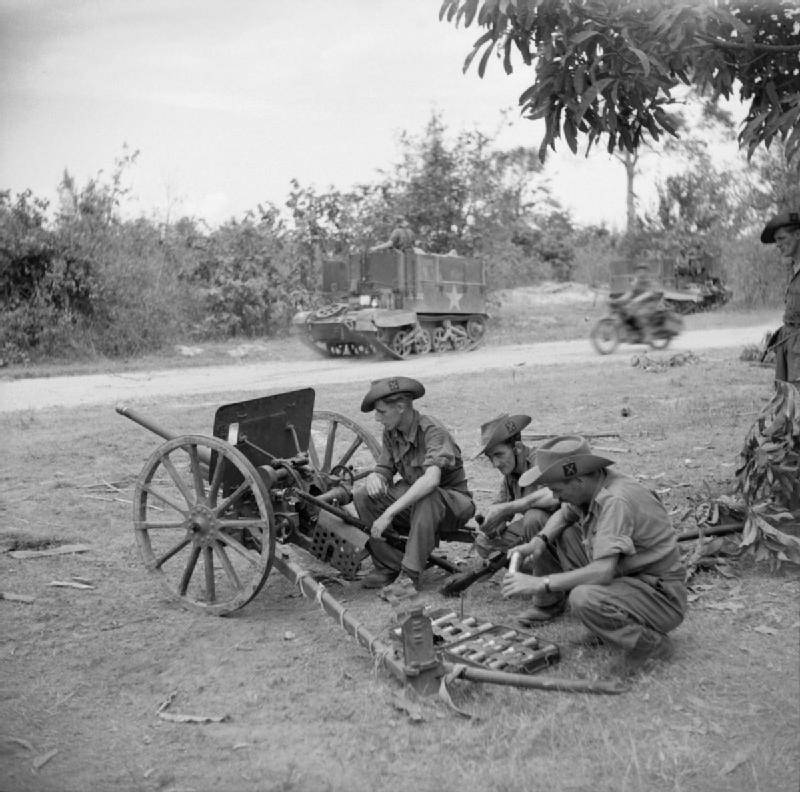
As in the case of Type 94, the Type 1 gun had a very low profile and was designed for firing from a sitting or lying position. Until April, 1945, the Japanese industry released about 2300 copies of Type 1. Upgraded 37-mm Type 1 guns were used along with the Type 94. Usually in each infantry regiment there were six to eight Type 94 or Type 1 cannons, and they were also equipped with separate anti-tank battalions.
At the end of 1930-s, in the framework of military-technical cooperation, documentation and several copies of 37-mm German 3,7 cm Pak 35 / 36 X-guns were delivered to Japan. Compared with the Japanese Type 94 gun, it was a much more sophisticated artillery system. According to archival data, Japan released its own version of 3,7 cm Pak 35 / 36, known as Type 97. But they donated such weapons very little.
Given the weak mechanization of the Japanese army and due to the specific conditions of the fighting in the Pacific theater, where the firing distance in the jungle in most cases did not exceed 500 m, it was very tempting to increase the armor penetration of 37-mm guns. Until the summer of 1945, work was carried out in Japan to create a new lightweight 37-mm anti-tank gun. Although it became clear already in 1943 that 37-mm guns had almost exhausted their potential, until the very end of the war, Japanese designers had not abandoned their attempts to improve their armor penetration. In particular, on the basis of 3,7 cm Pak 35 / 36, prototypes with an elongated barrel were created, in which slug sleeves with an increased weight of gunpowder were used. Field tests demonstrated that a solid-metal armor-piercing projectile with a carbide tip, leaving the barrel at a speed of about 900 m / s, could pierce 300 mm bronelist at a distance of 60 m, which made it possible to hit American medium tanks. However, the barrel durability amounted to only a few dozen shots, and the weapon was not launched into mass production.
Shortly after the end of hostilities in Khalkhin Gol, the command of the Japanese army initiated the development of an anti-tank cannon, superior in its capabilities to Soviet 45-mm guns. In a number of sources there is information that when creating an 47-mm Type 1 anti-tank gun, the designers of the Osaka Imperial Arsenal used the German 37-mm 3,7 cm 35 / 36 cannon as the initial sample, proportionally increasing it in size.
The prototype 47-mm gun completed the tests at the start of the 1939 of the year. Since the initial version, designed to be transported by horse bunk, no longer met modern requirements for mobility, in March 1939, the gun received a spring suspension and wheels with rubber tires. This made it possible to provide towing with a mechanical strut, and in this form the gun was presented to the military. Simultaneously with the 47-mm, the development of an 57-mm anti-tank gun, which had a greater armor penetration, was conducted. At the end of the 1930-ies the creation of a powerful anti-tank guns was not among the priority programs of the Japanese army, and therefore adopted the 47-mm anti-tank gun in order to save.
The mass of 47-mm guns in the combat position was 754 kg. The total length of the barrel - 2527 mm. The initial velocity of the armor-piercing-tracer shell weighing 1,53 kg - 823 m / s. According to American data, at a distance of 457 m, a projectile could penetrate 67 mm armor when hit at right angles. An armor-piercing substage caliber projectile with a tungsten carbide core was also created, testing homogeneous armor with 80 mm, but it was not mass-produced. A well-trained calculation provided a combat rate of fire to 15 rds / min. The total number of gun maids was 11 people.
Staffing and tactics of the Japanese anti-tank artillery
Serial production of 47-mm anti-tank guns began in April 1942, and continued until the end of the war. In total, about 2300 Type 1 guns were fired, which clearly did not meet the needs of the Japanese army in anti-tank artillery. The Type 1 gun entered separate anti-tank companies or battalions, which were attached to the divisions. In the case of deployment in a fortified area, one division could receive up to three battalions. Each individual anti-tank battalion had 18 47-mm guns. The motorized anti-tank battalion, which was part of a tank division, also had to be equipped with 18 anti-tank guns. Separate anti-tank companies attached to motorized rifle regiments included three or four platoons of two guns each. Infantry regiments relied anti-tank company, consisting of three fire platoons, each with two anti-tank guns. Given that the Japanese industry could not produce a sufficient number of 47-mm guns, 37-mm guns were used in many parts. Depending on how the divisions and regiments were given Type 1 anti-tank guns, trucks, tractors or horse-drawn carriages were used to tow them. To facilitate masking and reduce weight, armor shields were often dismantled from guns.
The extensive use of Type 1 began in the summer of 1944, during the battles for Saipan and Tinian. A significant number of 47-mm guns were also used in combat operations in Southeast Asia. Approximately 50% of American armored vehicles in the Philippines were destroyed by 47-mm guns. By the beginning of the battle for Iwo Jima, the Japanese forces had an 40 Type 1 on the island.
In the Battle of Okinawa, the Japanese garrison deployed 56 Type 1. However, the Americans suffered the main tank losses from mines and ground kamikazes. On the island of Guam, the US Marine Corps captured 30 47-mm guns.
In the initial period of hostilities in the Pacific theater 47-mm anti-tank guns Type 1 easily hit the M3 / M5 Stuart tanks at real combat distances. However, the effectiveness against the frontal armor of the medium tank M4 Sherman was significantly lower. According to American data, Type 1 could hit M4's forehead only from a distance of about 150. In one of the battles on Luzon, Sherman received six hits at that distance, with five breaks, while the zaronevaya striking effect was modest and the tank was quickly restored to service. . According to some sources, for confident defeat of the M4 side armor a distance of less than 500 meters was required.
The lack of effectiveness of 47-mm anti-tank guns forced the Japanese to use ambushes and other methods to hit the M4 side or aft armor and to fire from short distances, at which frontal armor was also vulnerable. Japanese instructions prescribed to wait for the tank to go a short distance by opening fire in order to increase the chances of hitting it for sure. According to the memoirs of the American military, the Japanese troops were extremely skilled in deploying and sheltering anti-tank guns, and flexibly used the terrain features and artificial barriers. Taking into account the location of the minefields of the anti-tank obstacles, the Japanese tank destroyers placed anti-tank guns so as to substitute the sides of the tanks under their fire. To protect against 47-mm armor-piercing shells, American tankers hung additional sheets of armor on the Shermans, as well as covering the hull and turret with spare tracks. This partly increased the protection of combat vehicles, but overloaded the undercarriage, reduced the permeability on weak soils and the speed of movement.
Unrealized projects of Japanese anti-tank guns
In the interwar period and during the Second World War, the Japanese leadership directed the main resources to the needs of the fleet and the improvement of combat aviation. The ground army was funded on a residual basis, and many promising types of anti-tank weapons were issued in very limited quantities or did not leave the aisles of the test sites at all. Fortunately for the American and Soviet tankers, the Japanese did not consider it necessary to establish mass production of 57 and 75 mm anti-tank guns. The artillery systems of these calibers were tested at the ranges, demonstrating significant superiority over 47 mm Type 01 cannons. Armor-piercing 57 and 75 mm shells at a range of 700-1000 m could confidently penetrate the frontal armor of medium tanks M4 Sherman and T-34-85. Apparently, the rejection of the serial construction of anti-tank guns, whose caliber exceeded 37-47 mm, was explained not only by their higher cost and metal consumption, but also by the acute shortage of mechanized traction in the Japanese army. Also, 81 and 105-mm recoilless guns were not brought to mass production.
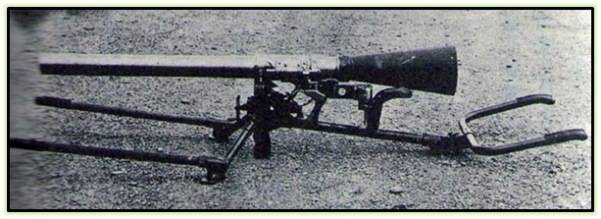
Shortly after the Japanese specialists got acquainted with the 1945-mm American wheelless M57 at the start of 18, the 81-mm recoilless gun was handed over for testing. The Japanese kickback for this caliber was unprecedentedly light. The body weight of the gun was only 37 kg, the American 75-mm gun M20 that appeared at about the same time weighed 54 kg. Initially, the 81-mm gun was mounted on the 20-mm Type 97 gun, but after the first firing it was transferred to the simplest tripod.
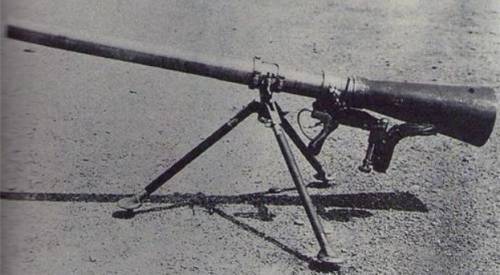
A cumulative projectile weighing 3,1 kg left the barrel at a speed of 110 m / s, and pierced 100 mm armor along the normal. The effective shot range did not exceed 200 m. While conducting combat operations in the jungle, this would be enough, but the downside of low weight was the low strength of the barrel. After several people died as a result of the rupture of the barrel at the test site, the 81-mm recoilless mechanism was no longer refined and the designers concentrated their efforts on the 105-mm recoilless gun. At the same time, a number of sources based on the recollections of Japanese veterans say that a small batch of 81-mm recoilless still hit the front and was used in the battles for Okinawa.
In February, 1945, the first sample of the 105-mm Type 3 recoilless gun, was tested. With a weight in the combat position of about 350 kg, the weapon could roll onto the battlefield by the forces of calculation. A charge of smokeless powder weighing 1590 g threw a 10,9 kg projectile with an initial velocity of 290 m / s. This made it possible to hit mobile armored targets at a distance of up to 400 m.
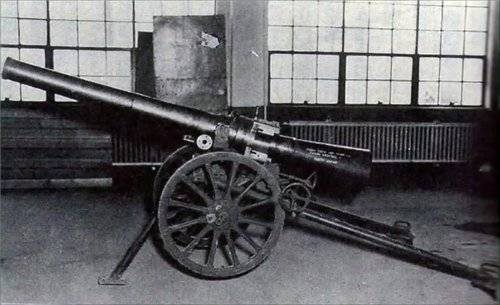
The 105-mm cumulative projectile was able to pierce along the normal an armor sheet with a thickness of more than 150 mm, which was a deadly threat to all serial tanks produced in 1945 without exception. Although there is no information about the creation of a high-explosive fragmentation projectile for a 105-mm recoilless gun, a sufficiently powerful cumulative grenade containing more than 3 kg of powerful explosives could be effectively used against manpower. In general, the 105-mm Type 3 recoilless gun had good performance, but the lingering refinement and congestion of Japanese industry with military orders did not allow it to be adopted.
To be continued ...
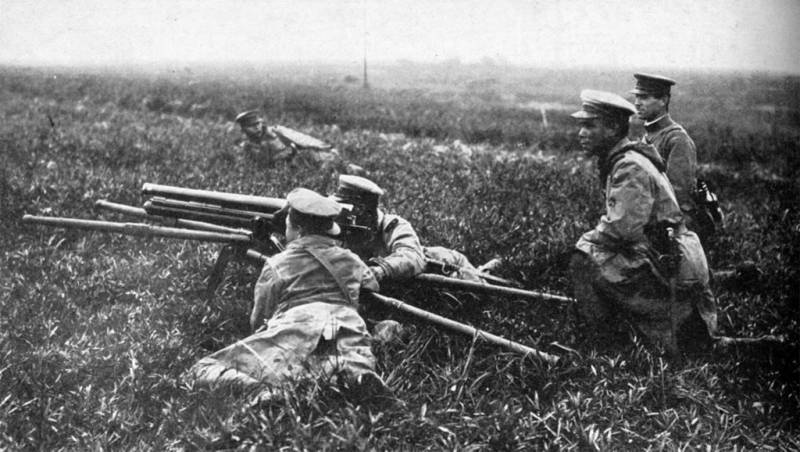
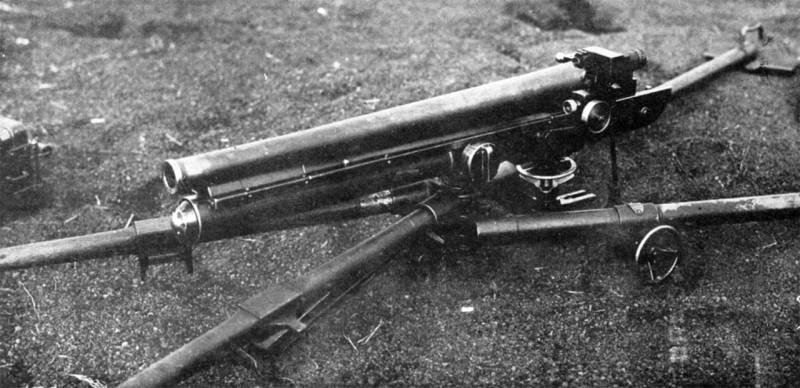
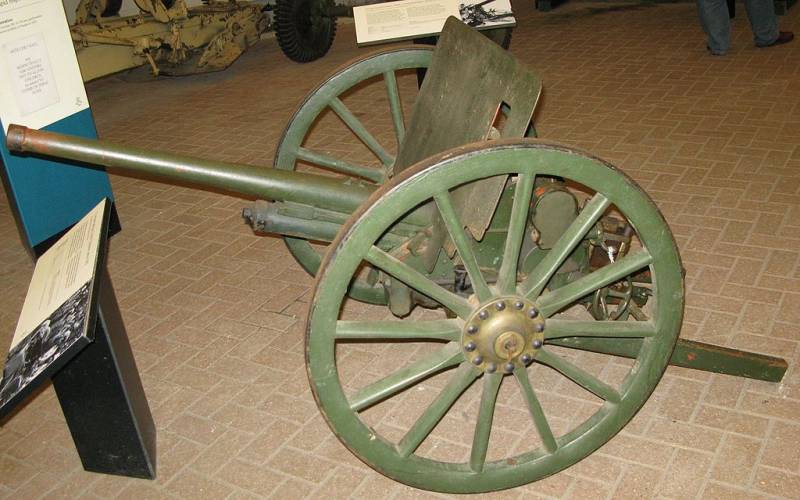
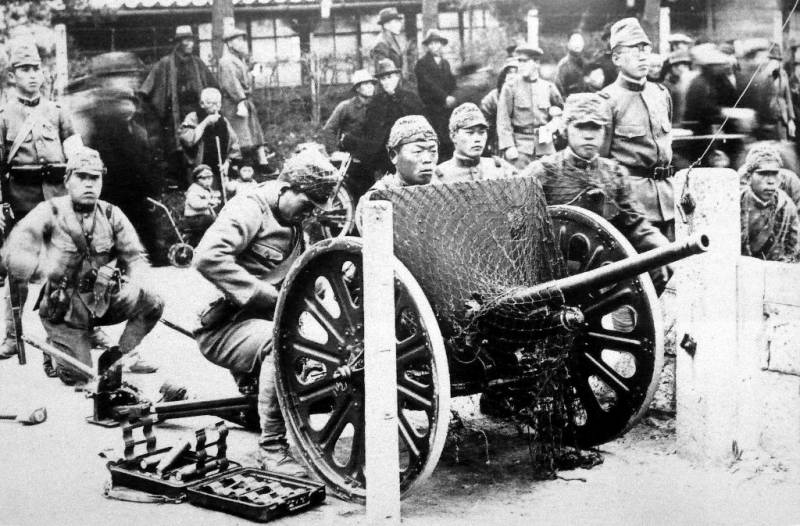
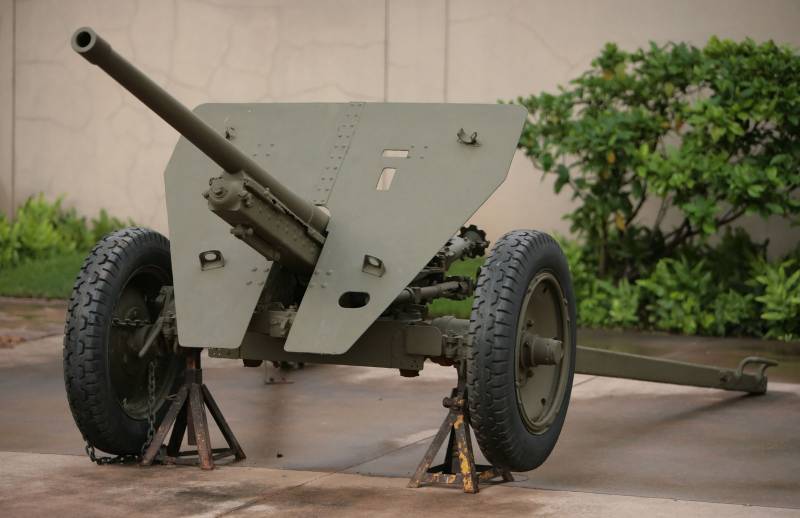
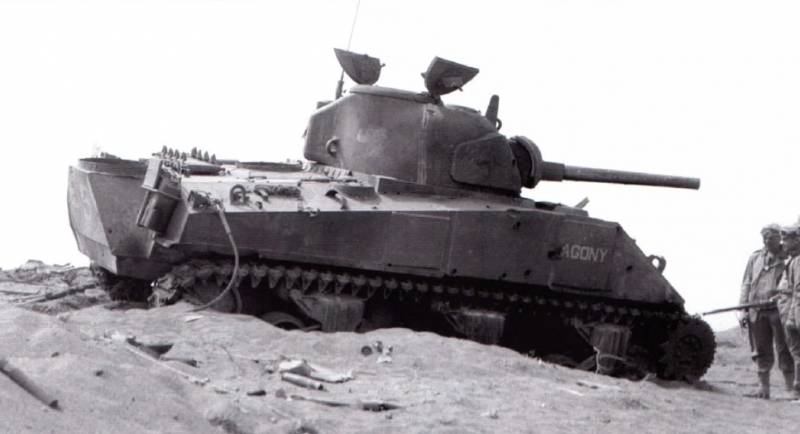
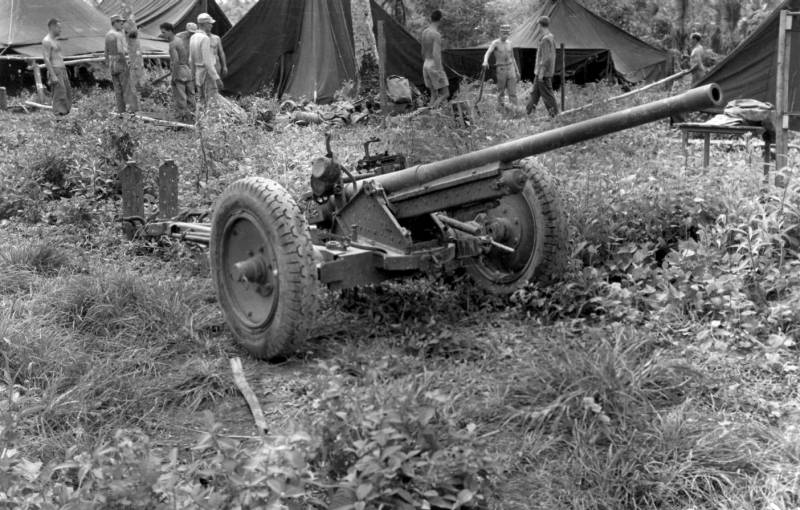
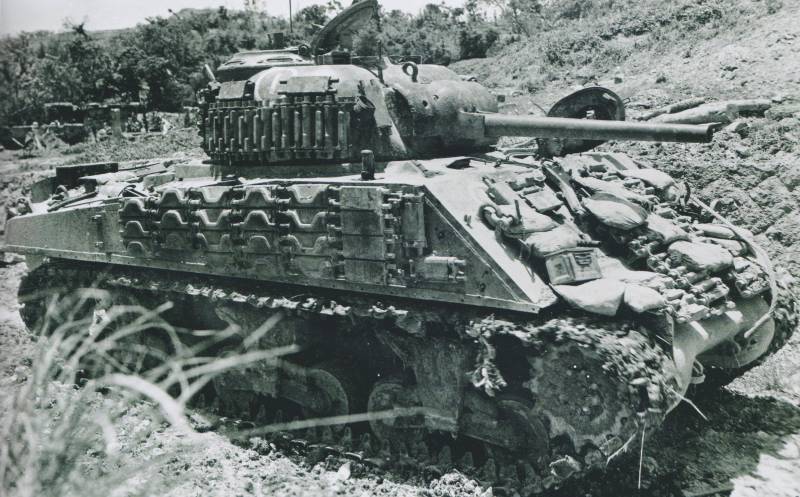
Information